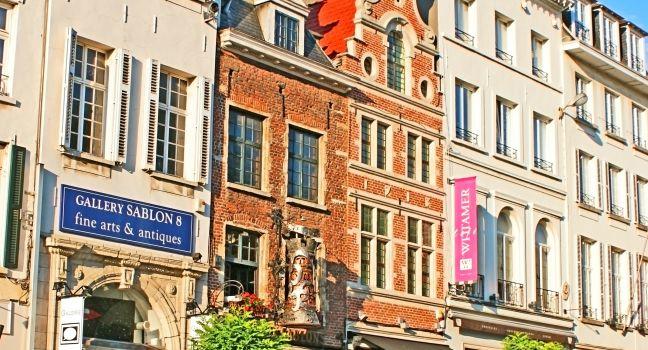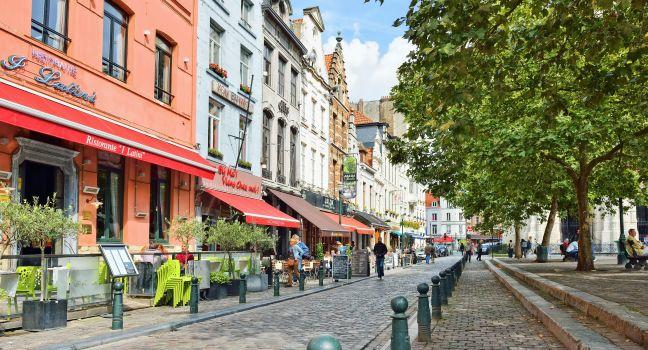La Maison Cauchie
Art Nouveau architect Paul Cauchie built this house for himself in 1905, using the facade as a virtual shop window for his sgraffito expertise. Sgraffito work begins with a light-color base layer; a darker color is added on top, and then, while the paint is still wet, etched with a design that allows the lighter color underneath to show through. Here, Cauchie covered the front with graceful, curving images of women playing lyres. The home’s interior, only open to the public on guided tours on Saturday (and the first Sunday of the month), is a wonderful example of the Art Nouveau aesthetic.





